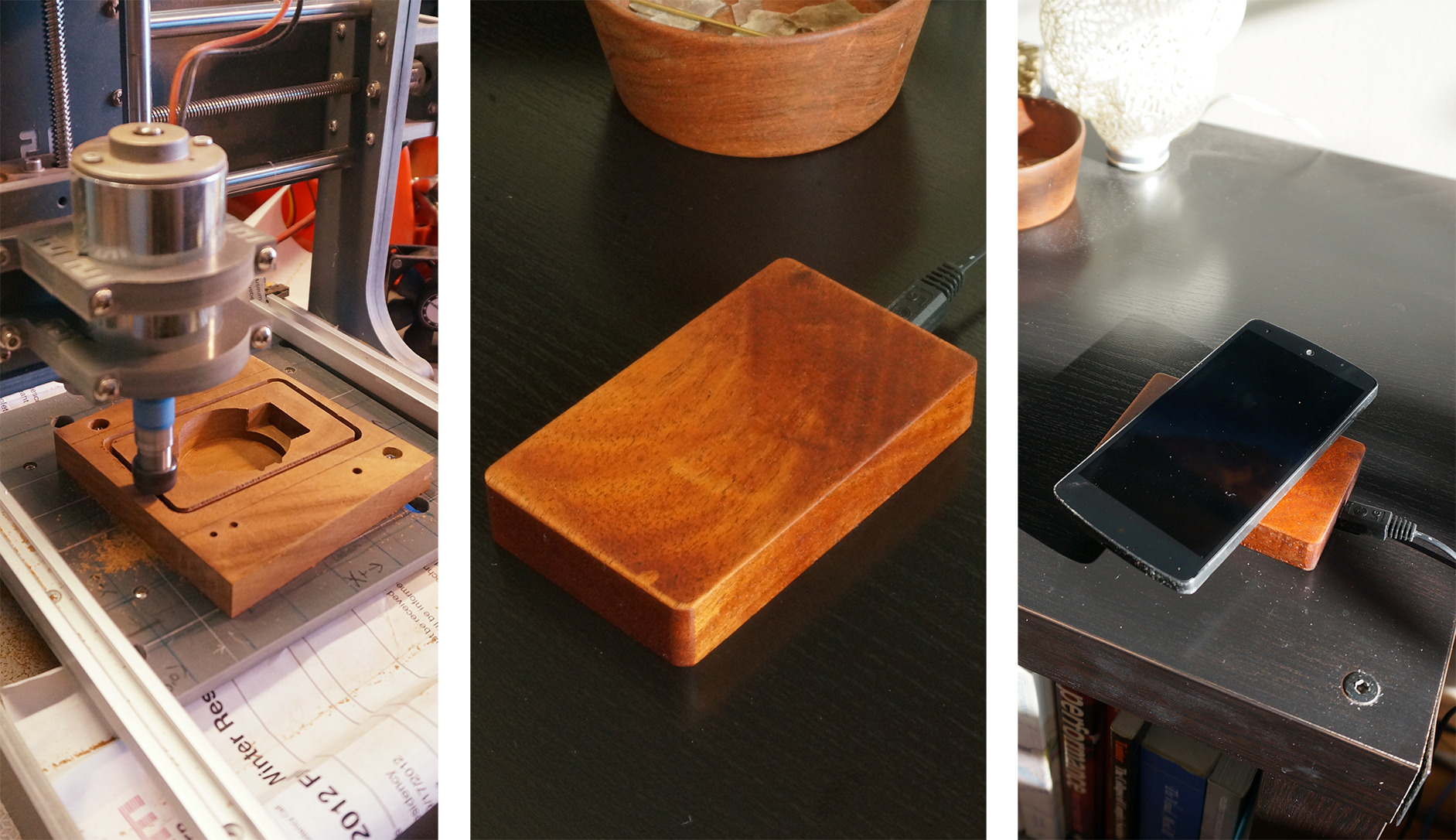Once you’ve test-fit all the components and you’re satisfied with the fit, it’s time to part off the piece and remove it from the rough stock. The type of cut we’re making doesn’t change — it’s just a profile cut — but we call it parting because it’s the final operation and it’s where, for example, we’ll lose orientation. If we made a mistake, or forgot a step, we would have to re-fixture the piece and then very carefully relocate the tool in order to restore the orientation we had before we parted it off.
Select the polyline that defines the boundary of the shape — mine is a rectangle with rounded corners, but it can be whatever shape you want: you could have a little waist in the middle, to better fit your fingers and make it easier to pick up the phone from the charger, you could give it a few curves or New Aesthetic-y non-orthogonal angled edges, whatever you like. I choose a rounded-corner rectangle because it’s easy to finish, feels good in my hand, and is as simple as possible, but no simpler.
One aspect of parting that is sometimes tricky is the fact that at the very end of the parting cut, your piece is no longer attached to the rest of the rough piece; there’s a chance that the piece will get “launched” away from the rough stock because of the direction of the endmill, pressures in the piece that were imparted by its fixturing, and so forth. Launching a piece sucks because it’s surprising, and can also mar your piece’s finish, requiring a bit of embarrassing cleanup.
My CAM software has a feature where it will automatically look at the perimeter of the object you’re parting and create tabs in an even spacing around the perimeter. These tabs are left uncut (you can specify the height, so they’re not the full thickness of your piece — just, say, the last 3mm) and help keep your piece in place until the end of the operation. The downside of using tabs is that they require more cleanup — chiseling, hacksawing, or sanding — than just parting off with the endmill.
CAUTION: It’s also possible, if you’re really careful and certain of what your machine will do next, to just press firmly on the piece for the last few cuts — you’re essentially clamping the piece to the bed while the final parting cuts occur, so it is much less likely to launch somewhere and get marred. This is risky, as some CAMs will return the tool to a particular place after the last cut — be sure you know what the tool will be doing after the last cut, so it doesn’t run into/over your clamping hand! I always set my machine to simply rise up from the piece and not make any X or Y moves.



